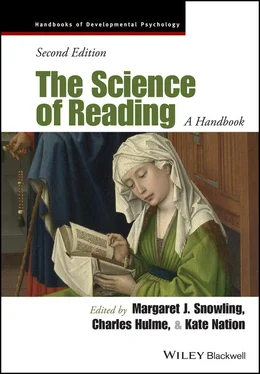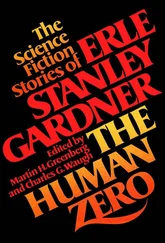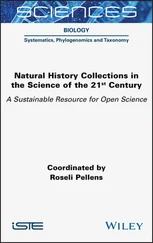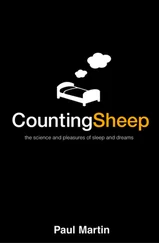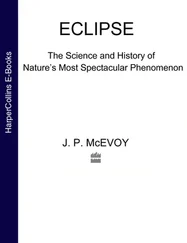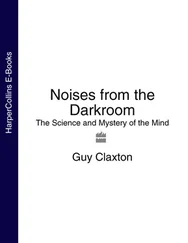The Science of Reading
Здесь есть возможность читать онлайн «The Science of Reading» — ознакомительный отрывок электронной книги совершенно бесплатно, а после прочтения отрывка купить полную версию. В некоторых случаях можно слушать аудио, скачать через торрент в формате fb2 и присутствует краткое содержание. Жанр: unrecognised, на английском языке. Описание произведения, (предисловие) а так же отзывы посетителей доступны на портале библиотеки ЛибКат.
- Название:The Science of Reading
- Автор:
- Жанр:
- Год:неизвестен
- ISBN:нет данных
- Рейтинг книги:5 / 5. Голосов: 1
-
Избранное:Добавить в избранное
- Отзывы:
-
Ваша оценка:
- 100
- 1
- 2
- 3
- 4
- 5
The Science of Reading: краткое содержание, описание и аннотация
Предлагаем к чтению аннотацию, описание, краткое содержание или предисловие (зависит от того, что написал сам автор книги «The Science of Reading»). Если вы не нашли необходимую информацию о книге — напишите в комментариях, мы постараемся отыскать её.
The Science of Reading
The Science of Reading
Wiley
Blackwell Handbooks of Developmental Psychology
The Science of Reading: A Handbook
The Science of Reading — читать онлайн ознакомительный отрывок
Ниже представлен текст книги, разбитый по страницам. Система сохранения места последней прочитанной страницы, позволяет с удобством читать онлайн бесплатно книгу «The Science of Reading», без необходимости каждый раз заново искать на чём Вы остановились. Поставьте закладку, и сможете в любой момент перейти на страницу, на которой закончили чтение.
Интервал:
Закладка:
The word‐identification system codes visual input as familiar orthographic units. The skilled reader has acquired an inventory of orthographic units – graphs, to use a neutral term – and connected them to language units (the word‐identification system in Figure 1.1)—allowing words to be identified.
From word superiority to interactive activation.
One of the most intriguing problems in reading science is how the reader’s knowledge of orthographic units is used in skilled reading (Grainger, this volume). The long‐standing answer is that readers come to recognize a word as a whole unit rather than a string of letters. J.M. Cattell’s famous experiments (1886; reviewed in Huey 1908) were intended to demonstrate this. After viewing a briefly exposed string of letters, Cattell attempted to report all the letters in the string. When the letters spelled a word, he could report more letters than when he viewed a random letter string.
In fact, Cattell’s experiments could not distinguish perception of the whole word from memory for some of its letters. Remembering enough letters would prompt retrieval of a word that contains them, making the report of the letter string a mix of perception, memory, and a bias to respond with words. Nevertheless, Cattell’s explanation (and Huey’s) stood unchallenged until the independent publications of experiments by Reicher (1969) and Wheeler (1970).
Reicher (1969) and Wheeler (1970) controlled for response bias by asking participants which of two letters had been briefly presented (and masked) in a particular position. For example, given the string lake , probing whether k or t had appeared in the third position would not produce a word bias, because either letter completes a word. The publication of these experiments stimulated a generation of research on the “word superiority effect,” eventually leading to a modified conclusion: Letters within nonword pronounceable strings (pseudowords) are also perceived better than random strings of letters. Letters in real words are perceived a little better than letters in these pseudowords, but the largest difference seems to concern the internal structure of the letter string, its word‐like orthography and phonology.
McClelland and Rumelhart (1981) explained both the word superiority effect and the pseudoword superiority effect in a new approach, a model that connected three hierarchical levels – words, letters, and letter segments – with bi‐directional activation between adjacent levels of the hierarchy. Activation spreading from letters up to words accumulates recognition evidence for specific words; and activation from a word down to the letter level accumulates evidence for the letters in that word. Thus, letters are perceived better in pseudowords than letter strings because they receive feedback from words that contain these letters (e.g., the k in loke receives feedback from lake and like ). Similarly, bi‐directional activation causes k to be better perceived in lake than loke, producing word superiority effect.
This approach became a model for how to conceptualize “interaction” in a precise way. The explicit representation of letters and words in a lexical memory system later gave way to Parallel Distributed Processing (PDP) models that learned connections rather than having them built in (Plaut et al., 1996; Seidenberg & McClelland, 1989; Seidenberg et al., this volume). However, the principles of the original interactive model with “localized” lexical representations were retained in other models of alphabetic reading (e.g., Grainger & Jacobs, 1996). Many computational models have been developed since these earlier models, which were restricted by small lexicons and limited generality across word reading tasks (Norris, 2013). These problems, and the focus on alphabetic writing, continue to challenge the generality of reading models.
The lexicon and how to get there from an orthographic string.
The distinction between computing and retrieving word pronunciations has had an enduring influence on models of reading. Early expressions of dual route ideas (Baron & Strawson, 1976; Forster & Chambers, 1973) became formalized by Coltheart et al. (2001) in the Dual Route Cascaded (DRC) model: A reader can arrive at a word’s pronunciation in two ways: 1) Decoding its letters to phonemes and producing the aggregated results – the computed route (also called sublexical, assembled, indirect). 2) Retrieving the pronunciation stored with its orthographic word‐form – the retrieved route (also called lexical, addressed, direct).
For a skilled reader, the difference between the two routes escapes notice because reading experience has established familiar lexical representations for many words. Thus, with appropriate experience, a reader may pronounce choir as easily as chore , unaware that the first resulted from the retrieval of a stored pronunciation associated with its spelling, while the second might have resulted from either route depending on familiarity with the word.
Both the DRC and PDP models can simulate word reading performance. For PDP models, the structure of mental representations emerges from many cycles of pattern association and error‐reduction learning. The DRC model, in the tradition of classic models with fixed assumptions, predicts experimental data based on a fixed architecture. Coltheart et al. (2001) showed that dual route models provide many specific, correct predictions of experimental results. The fundamental difference between the two models is between a model that learns – without necessarily showing either the time course or the pattern of learning outcomes of an actual learner – and a model that has already learned and is now ready to read any word or letter string one can throw at it. Narrowing the gap between these models are approaches that add a learning component to the DRC model (Pritchard et al., 2016) and combine elements of connectionist and DRC modeling (Perry et al., 2007; see Seidenberg et al., this volume for discussion).
Phonology in skilled word identification.
Concerning readers’ self‐reports, Huey wrote, “Of nearly thirty adults who were thus tested, the large majority found inner speech in some form to be a part of their ordinary reading. Purely visual reading was not established by any of the readers,.…” (1908, p. 119). This conclusion about phonology during silent reading continues to seem correct (see Brysbaert, this volume).
The issue in word identification is more specific: whether the phonology of a word is “prelexical” – the phonemes activated by letters and letter strings lead to word identification – or “postlexical” – word phonology follows after access to the orthographic form of the word. Opinion generally favored a direct‐to‐meaning identification procedure with no prelexical phonology in skilled reading, rationalized partly by questionable assumptions about the consequences of English spellings: Because English spelling‐to‐pronunciation mappings have inconsistencies, readers learn to read English without using these unreliable mappings.
However, various experimental approaches provided evidence to the contrary. One was to expose a word briefly (35–45 ms) followed by a backward mask consisting of letter strings. When the letter mask reinstated the word’s phonemes, identification of the word improved, even when the letters were changed ( choir – #### – kwire ) (Perfetti et al., 1988). This effect implies that, prior to the word’s identification, some of its phonology had been activated. Lukatela and Turvey (1994a, b), using a similar logic with primed lexical decision, found that homophone primes (e.g., towed – toad ) produced strong facilitation relative to spelling controls. These conclusions were supported by a meta‐analysis by Rastle and Brysbaert (2006).
Читать дальшеИнтервал:
Закладка:
Похожие книги на «The Science of Reading»
Представляем Вашему вниманию похожие книги на «The Science of Reading» списком для выбора. Мы отобрали схожую по названию и смыслу литературу в надежде предоставить читателям больше вариантов отыскать новые, интересные, ещё непрочитанные произведения.
Обсуждение, отзывы о книге «The Science of Reading» и просто собственные мнения читателей. Оставьте ваши комментарии, напишите, что Вы думаете о произведении, его смысле или главных героях. Укажите что конкретно понравилось, а что нет, и почему Вы так считаете.
